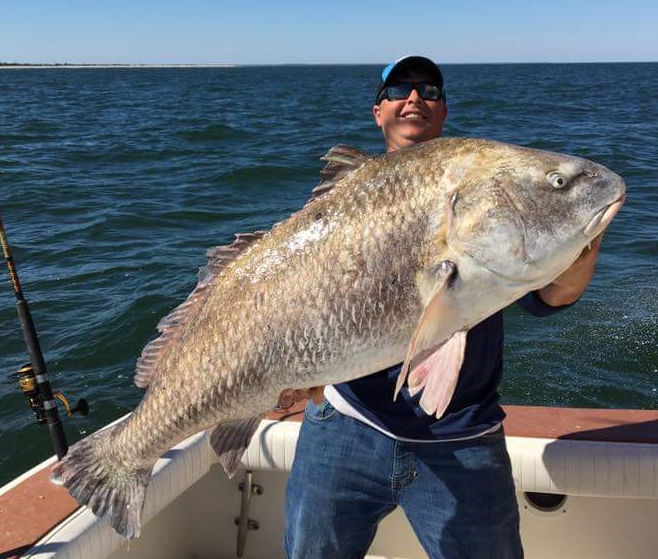Author: Terry D. Lacoss
Coastal Angler/Fernandina Beach Fishing Report for Jan. 2018
Sweet water fishing is excellent during stable weather conditions both in the upper reaches of the Nassau and St. Mary’s river systems where a variety of both fresh and saltwater game fish are abound. Striped bass fishing is excellent during the first hour of the falling tide while fishing on the bottom with cut mullet, or working a white spinner at the mouths of feeder creeks.
Largemouth bass will be fattening up for the winter spawn while feeding in the shallow sloughs where feeder creeks are key. Drifting a wild shiner is key in catching heavyweight bass. Schooling bass will readily take a #11 gold Rapala worked close to shoreline cover.
One of my favorite sweet water creeks includes Lofton Creek where on one stretch of the this brackish creek just below the power lines, you are apt to catch sea trout, largemouth bass, redfish or striped bass!
Black drum fishing is excellent in the deep waters of both Cumberland and Nassau Sounds when a warm winter in-coming tide arrives in late afternoon. Seasoned black drum fishermen prefer fishing with fairly heavy fishing gear including 30-50 pound tackle while fishing dead on the bottom with ultra-fresh shrimp or a quarter blue crab.
Offshore fishermen will be targeting excellent eating black sea bass at KBY reef where broken concrete strewn along a rough bottom is a huge attraction for these excellent eating fish. Best baits include fresh squid, or cut baits. A sporting fishing technique includes employing twenty-pound spinning tackle with the spinner filled with twenty-pound braided fishing line. A four-foot length of fifty pound fluorocarbon shock leader is attached to the tag end of the main line using back to back “Uni” knots. Finally a four-ounce buck tail jig is tied to the jig using a “Loop” knot. Drop the buck tail jig down to the bottom, engage your spin reel and begin to jig the lure slowly making sure that the jig makes contact with the rough bottom. Keep in mind that most winter bottom feeders will prefer to feed along the bottom where they can easily trap their meal against the structure.
January bottom fishing is also excellent at FA, FB, FC and HH fish havens during the month of January. Winter offshore fishermen can also expect to catch gag grouper, flounder, sheepshead and red snapper. Be sure to check the latest FWC fishing regulations by visiting www.myfwc.com.
Further offshore winter wahoo fishing can be red hot at Northeast Florida’s “Continental Shelf”.
A favorite setup for wahoo begins with 50-pound class trolling rods set at the transom and fished with weighted lines. A 24-ounce trolling weight is rigged to a 15-foot section of 200-pound mono shock leader is attached to the trolling weight for high speed trolling to up to 15-knots. At the business end, a blue and white rubber skirted “Jet Head” is attached.
Today specially designed and rigged trolling lures are luring the speedy wahoo which are capable of chasing down a high speed lure at speeds up to 60-miles per hour. Here trolling speeds are bumped up from 12-18 knots. Heading the list of high speed lures includes C & H “Mr. Big”, “Wahoo Whacker XL” and the “American Express”.
Inshore fishermen will be targting hard hitting redfish during a flood and low tide. Sight fishing for redfish is becoming more and more popular where many inshore fishermen have sold their jetty and offshore fishing boats and are now chasing redfish with a shallow water boat. Prime areas to sight fish for January redfish include the marsh bays located just south of the “Shave Bridge”.
Look for the last of the falling tide to uncover large schools of redfish that art huddled up in a shallow pool feeding on crabs and shrimp. Best lures include the Berkley Gulp shrimp in the “New Penny” color pattern and a ½ ounce gold spoon.
Sea trout will be holding along the deep waters of the Intra Coastal Waterway where fishermen will be drifting live shrimp deep under a trout float. A key area includes the rough and rocky shoreling located just south of the mouth of Egan’s Creek.

